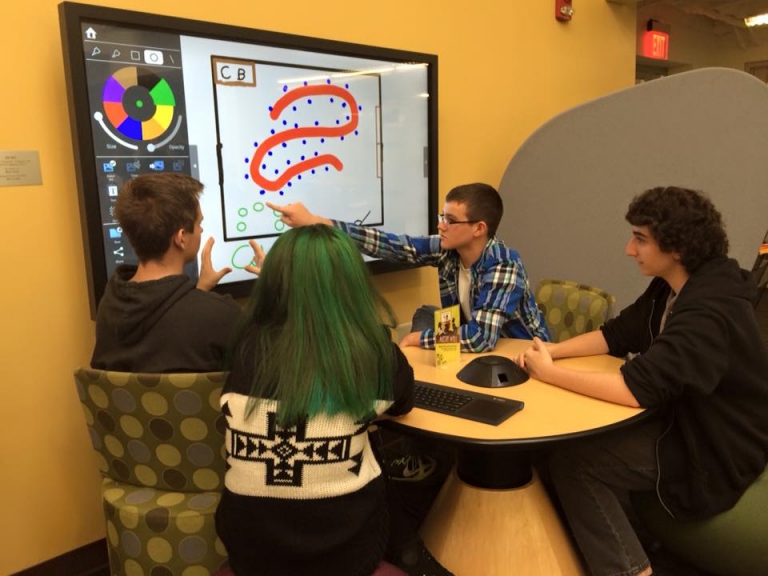Information Cycle
As you define your information needs and develop a research plan, it helps to understand how information is produced and published, where it comes from, and how it changes over time; in other words, it helps to understand the information cycle. Understanding the information cycle helps you determine what type of information is available on your topic, know where to look for that information, and better evaluate the information you find.
To better understand the information cycle, think of an event (maybe 2005's Hurricane Katrina in New Orleans, Louisiana; the 9/11 terrorist attacks on the United States; or the 2000 Martin County Sludge Spill in Martin County, Kentucky) and follow the flow of media and information about that event through the information cycle:
The day of...
Television, radio, Internet, and other similar media outlets provide information about the event.
- authors are primarily journalists or staff writers
- information is intended for a general audience
- information provides a picture of the general news questions: who, what, where, when and why
- information is the first available and regularly updated, but lacks detail
- information is often sketchy and inaccurate
The day after...
Newspapers begin providing information about the event.
- authors are primarily journalists or staff writers
- information is intended for a general audience
- information is longer, generally including chronology of and explanations of why the event occured
- information is more factual and provides a more developed view of the immediate context of the event
- information may include quotes from government officials, experts, or individuals directly involved with the event
- information may include statistics, photographs, and editorial coverage
- information may include local perspectives on a story as appropriate
The weeks following...
Popular magazines and news magazines begin providing information about the event.
- authors vary from journalists and staff writers, to essayists, to scholars or experts in the field
- information is intended for a general audience or specific non-professional, non-scholarly groups
- information is lengthier and more developed
- information begins to discuss the impact of an event
- information begins to include perspectives from particular groups or for specific audiences
- information is often factual, but may reflect the editorial bias of a publication
Six months to a year following...
Academic Journals begin to include articles about the event.
- authors are scholars, researchers, and other professionals and experts in the field
- information is intended for a scholars, researchers, professionals, and university students in the field
- information includes detailed analysis and research
- information is often theoretical, and provides careful analysis of the impact of the event
- information may be peer-reviewed, offering higher levels of credibility and accuracy
- information is narrow in topic
- information includes detailed bibliographies, allowing the for verifiability and access to additional information
One year after...
Books covering the event are published.
- authors are third party writers, scholars, specialists, professionals, and researchers; however, credentials of authors vary
- information ranges from scholarly in-depth analysis for a scholarly audience, to popular books providing general discussions and overviews with little research for a general audience
- information offers in-depth coverage of an event, often expanding on the themes, subjects, and analysis seen in academic journals
- information offers secondary analysis of the event, placing the event in context historically and providing a detailed account of the impact of the event
- information might have a bias or slant, depending on the author or publisher
- information includes detailed bibliographies, allowing for verifiability and access to additional information
Government Reports concerning the event appear.
- authors are government panels, organizations, and committees
- information is intended for all audiences
- information comes from all levels of government (state, federal, international)
- information includes reports compiled by governmental organizations and summaries of government-funded research
- information is factual, and often includes statistical analysis
- information often focuses on an event in relation to public policy and legislation
Beyond a year...
Encyclopedias, textbooks, and other tertiary sources begin to report the event.
- authors are scholars and/or experts
- information is intended for a general audience, but may be of use to researchers, scholars or professionals, especially if those individuals are new to the field or topic of study
- information is factual, and often is presented in the form of general overviews or summaries
- information may include statistics
- information is broad and not as detailed as information found in books or academic journals
- information includes detailed bibliographies, allowing access to additional information
Continue to Primary, Secondary, & Tertiary Sources
Return to Determine Information Needs

